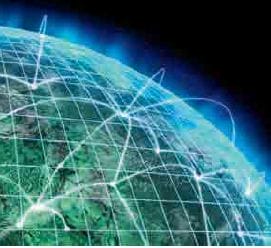Wharton Risk Management and Decision Processes Center Co-Director Howard Kunreuther and Managing Director Erwann Michel-Kerjan have been collaborating closely with the World Economic Forum (WEF) for the past six years to release the Global Risks Report, an annual assessment of risks that has become a highly anticipated part of the WEF’s annual meeting.
Circulated prior to the Davos meeting in late January—and just weeks before massive earthquakes rocked New Zealand and Japan—Global Risks 2011 identified forces of economic disparity and global governance failures as two of the top risks for the coming years. Fittingly, as business and government leaders convened for the event, a revolution in Egypt unfolded in real-time, influenced by those very issues.
This year’s report was not the first to prove prescient. According to Kunreuther, Wharton’s James G. Dinan Professor, statements about the risk of asset price collapse in earlier reports were borne out by the data in the financial crisis. As a result, world leaders are listening to what WEF has to say, and the report has grown in influence each year.
The Wharton Risk Center has been a partner in WEF’s global risk initiative since its inception in 2005, working with the dedicated team at the WEF, Marsh & McLennan Companies, Swiss reinsurance Company and Zurich Financial services. For 2011, more than 560 leaders and experts around the world assessed 40 global risks in terms of their likelihood and severity for the creation of the Global Risks Report.
The top risks this year? Fiscal crises, climate-related risks, extreme energy price volatility, economic disparity and global governance failures.
The Global Risks Report does not predict what will happen next week, but rather what is likely to happen within the next five to 10 years. events of the past year were cited, too—including major fiscal crises, devastating earthquakes in Haiti and Chile, large-scale floods in China, Pakistan and Australia, unprecedented fires in Russia and social unrest.
Understanding Interconnections Between Risks
One unique aspect of the report—emphasis on interconnections between risks—is now gaining wider acceptance.
“The interconnectedness was a theme everyone was talking about in terms of recognizing that these different risks overlap each other,” says Kunreuther. “If one particular institution or supplier has a problem it can have an impact on other parts of the system—thus magnifying its economic impact.”
Adds Michel-Kerjan: “Until recently, we all tended to look at risks in silos. Some people looked at asset price collapse and others looked at fiscal insurance. Until the reports came out, people didn’t look at how they were interacting with each other. That question is something we’ve been trying to address in Davos because they are very interconnected, [and we’re] thinking of them together instead of fixing problems one by one.”
Take, for example, climate change, which affects catastrophic weather events and food security. “If you have problems providing food to satisfy the needs of the growing population in emerging economies,” Kunreuther says, “This can create a host of other problems.”
In addition to the interconnected risks tied to water, food and energy, Global Risks 2011 highlighted two more risk clusters of particular concern: the relationship between illicit trade, crime, corruption and state fragility; and risks related to global macroeconomic imbalances.
As the report states: “As the world grows together, it is also growing apart.”
“The world seems like a more dangerous place,” says Michel-Kerjan. “We have many more people on the planet, and that changes the scale of catastrophes. We’re about to reach seven billion people today, and many of these people live in high-risk areas, on the coast for example. The same hurricane that would have hit a small number of people 20 years ago now has a much bigger human impact because there are more people living in these areas.”
Beyond Risk into Action
Global Risks Report goes beyond simply identifying risks and interconnections, however. It also urges leaders to address the causes, rather than the symptoms, of global risk, to develop coordinated response strategies and to take a longer-term approach.
While many natural disasters aren’t preventable, their impact is dependent on the design of structures and systems of global governance. After observing the terrible loss of life in the Haitian and Chinese earthquakes, the global risk network began to look at the achievable goal of improving the construction of schools.
“Thousands were killed in the Haitian and Chinese earthquakes—the cost of poorly designed buildings. How do you do a better job on the construction side?” Kunreuther asks.
“Marshal the parents. Parents want their children safe, and they are likely to have traction with the government and donor agencies who could provide funding for this effort. this would be in the spirit of trying to find something that is relevant and achievable so that people say, ‘We should do this now.’”
The Wharton Risk Center will be working with the World Economic Forum on this issue, trying to develop concrete products with immediate benefits while continuing to address long-term strategies in the Global Risks Report.
Says Kunreuther: “If alumni have ideas, we want to hear them. If they think of concrete suggestions for developing long-term strategies for dealing with these ideas, we want to hear them.”
For more information about the Risk Center, visit opim.wharton.upenn.edu/risk/

























